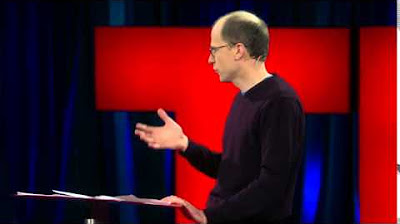2. Sejarah Teknologi dan AI
Summary
TLDRIn this second meeting, the speaker discusses the historical evolution of technology, focusing on significant advancements leading to artificial intelligence (AI). Beginning with the discovery of fire, the talk highlights how technological innovations like agriculture and machinery transformed human culture. Key figures such as Alan Turing, who posed the question of machine intelligence and developed the Turing Test, are introduced. The discussion also includes the contributions of pioneers like Frank Rosenblatt and the emergence of deep learning. Ultimately, the session emphasizes the lasting impact of these technologies and invites students to reflect on their contributions to AI.
Takeaways
- 😀 The meeting discusses the history of technology, specifically focusing on artificial intelligence (AI).
- 🔥 The discovery and control of fire were pivotal technological advancements that transformed human culture and social structures.
- 🐎 The domestication of animals, particularly horses, facilitated advancements in agriculture and communication in ancient societies.
- ⚙️ The invention of machines, including steam and electrical engines, marked a significant shift in technology, replacing animal labor.
- ⚡ Electricity emerged as a crucial foundation for modern technology, enabling the development of digitalization and AI.
- 🧠 Artificial intelligence (AI) refers to the simulation of human intelligence in machines, a concept first introduced by John McCarthy.
- 🖥️ Alan Turing played a critical role in the development of computers and proposed the Turing Test to evaluate machine intelligence.
- 🤖 The history of AI also includes significant contributions from individuals like Frank Rosenblatt, who developed the perceptron model for neural networks.
- 📊 Key figures in deep learning include Geoffrey Hinton, Yann LeCun, and Yoshua Bengio, who advanced neural network technologies.
- 🔍 The ongoing development of AI technologies prompts questions about their relevance and the potential future impact on society.
Q & A
What is the significance of fire in the development of technology according to the transcript?
-Fire is considered the first technology that transformed human culture, enabling people to cook food, providing a stable food source, and allowing for the creation of tools from metal.
How did the ability to control animals contribute to human technology?
-Controlling animals for agriculture and transportation represented a significant technological advancement, particularly during the Middle Ages, as it facilitated communication and warfare.
What role did electricity play in technological advancement?
-Electricity served as a crucial support for machinery, enabling the transition from animal and steam power to electrical power, which laid the groundwork for digital technologies.
Who is John McCarthy, and what is his contribution to artificial intelligence?
-John McCarthy is credited with coining the term 'artificial intelligence' and was a significant figure in the field, emphasizing the importance of machines capable of intelligent behavior.
What was Alan Turing's contribution to computing and artificial intelligence?
-Alan Turing developed the concept of the general-purpose computer and introduced the Turing Test, a method to evaluate whether a machine can exhibit intelligent behavior equivalent to a human.
What is the Turing Test, and how is it conducted?
-The Turing Test involves a human evaluator who interacts with a machine and a human without knowing which is which. If the evaluator cannot reliably distinguish the machine from the human, the machine is considered to have passed the test.
What innovations did Frank Rosenblatt contribute to artificial intelligence?
-Frank Rosenblatt invented the perceptron, an early model of artificial neural networks that serves as the foundation for many modern AI algorithms.
How do the concepts developed by Hinton, LeCun, and Bengio relate to deep learning?
-Geoffrey Hinton, Yann LeCun, and Yoshua Bengio are known for their significant contributions to deep learning, particularly through the development of neural networks and algorithms that mimic human cognitive processes.
What distinguishes deep learning from traditional machine learning?
-Deep learning involves multi-layer neural networks that can automatically learn features from large amounts of data, whereas traditional machine learning often requires manual feature extraction.
What are the expectations for the future of artificial intelligence as discussed in the transcript?
-The future of AI is expected to evolve with ongoing technological advancements, and it will continue to support and enhance various other technologies, maintaining its relevance.
Outlines

This section is available to paid users only. Please upgrade to access this part.
Upgrade NowMindmap

This section is available to paid users only. Please upgrade to access this part.
Upgrade NowKeywords

This section is available to paid users only. Please upgrade to access this part.
Upgrade NowHighlights

This section is available to paid users only. Please upgrade to access this part.
Upgrade NowTranscripts

This section is available to paid users only. Please upgrade to access this part.
Upgrade NowBrowse More Related Video

Artificial Intelligence and the future | André LeBlanc | TEDxMoncton

Nick Bostrom What happens when our computers get smarter than we are?

Human Brain vs. Artificial Intelligence: Reality and Prospects

SEJARAH PERKEMBANGAN TEKNOLOGI INFORMASI

How to get empowered, not overpowered, by AI | Max Tegmark

NVIDIA CEO Jensen Huang On The Future of Education with AI
5.0 / 5 (0 votes)